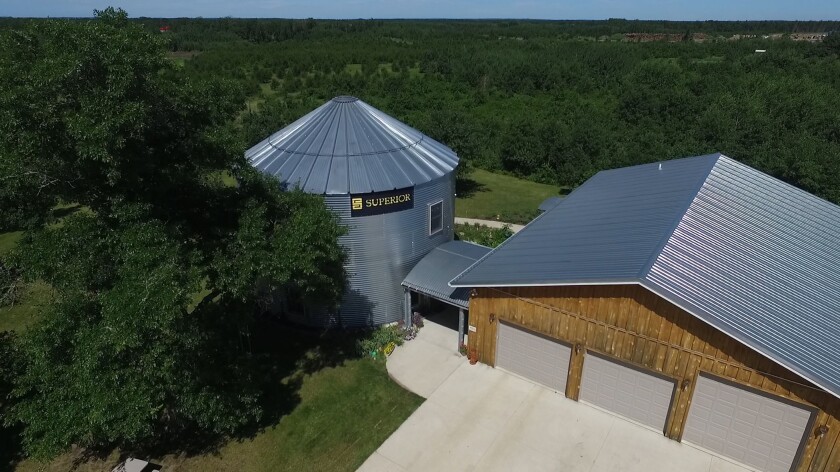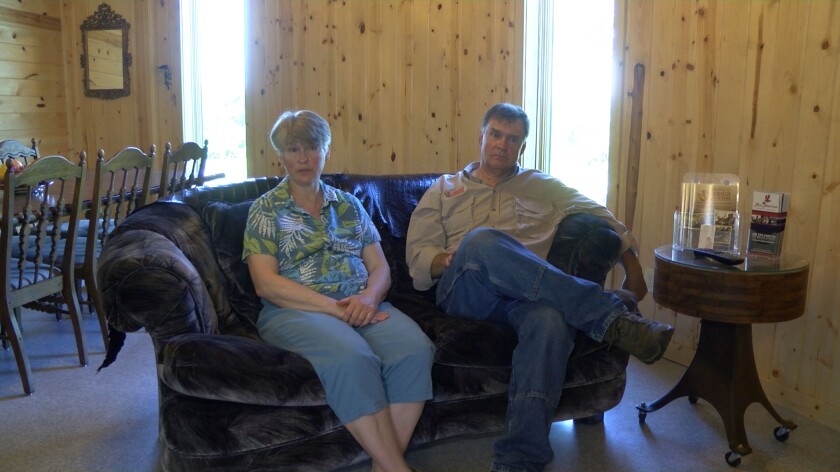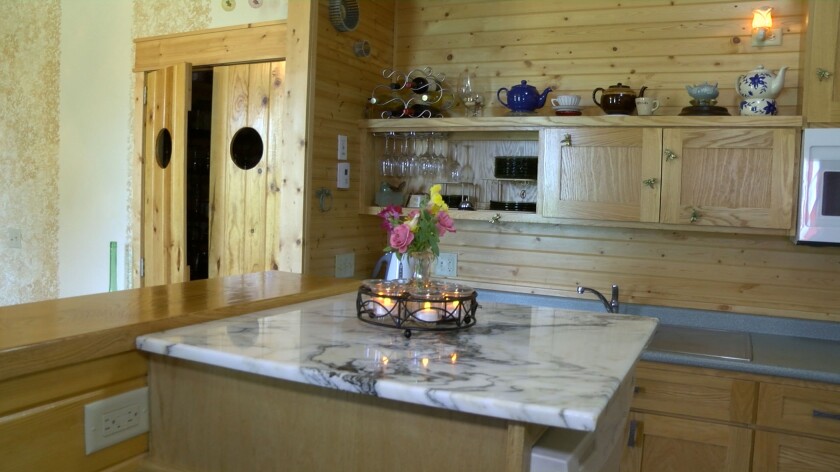BRAINERD, Minn. - A few years ago, Brian and Cynthia Bachman wanted to downsize into something low maintenance, and something different.
"We've always been real creative about our houses. In fact, one of the first houses we built was octagon shaped. And, interestingly enough, at that time he had said to me, 'don't ever think you're going to be getting a round house, because that's going to be too complicated,'" Cynthia said.
"I looked at a few different things. Containers. Would have really liked the fuselage out of a 747, but we couldn't move that," Brian said.

They finally decided a grain bin was the way to go. They first planned to buy and move a used bin onto their rural land outside of Brainerd, but they discovered a new one would be more economical and easier to work with.
ADVERTISEMENT
"Because I didn't need all of the floors, the dryers, the vents, the stairs, any of that," Brian explained.
After doing some research online, they decided on a Superior Grain bin, made in Kindred, N.D. The folks at Superior were skeptical at first.
"He said he has a few calls every year that people want to do this, but nobody ever does it," Brian said. "But they were really surprised how it turned out."

It was about a two-year project, starting in 2011. The house is about 2,000 square feet on two floors.
"It seems small from the outside, but once you step in, it seems much bigger," Brian said.
The bin cost about $17,000, including delivery and installation. Brian is a wilderness outfitter and leads hunts all over the world, but he also has a background as a general contractor, so the Bachmans did most of the construction work themselves, keeping costs low. They also saved money by salvaging many of the interior finishings from other homes they've owned or construction resale shops.
ADVERTISEMENT

"I traded a lot of the work out," Brian said. "We didn't have to purchase a lot. It was quite economical. Out of pocket, we were less than a $100,000." Another advantage is that they didn't have to buy roofing or siding.
There were a few tricky things, like figuring out how to install windows, electrical fixtures and plumbing in a round structure.
"We interviewed plumber after plumber, and we couldn't get one. We finally figured out what the issue was, is they didn't know how to figure out where the plumbing should go, because they're used to measuring from a square corner," Cynthia said. The same was true for trying to figure out where to install ceiling light fixtures. Another quirk of a round house is that there are no hallways, so each room flows into the next.

Even finishing details had to be adapted to the shape. Rope is used for ceiling trim, and every vent cover was custom designed by Cynthia, who has a master's degree in art education, and then hand-crafted by a friend.
"We had to cut each one before we designed it, because they were all different sizes," Brian said.
The exterior is very low maintenance. Another plus: It's super energy efficient. Heating costs are less than $400 a year. They put in 3 inches of spray insulation, and outside, the bottom is ringed with Minnesota taconite that absorbs heat. And Brian said the construction is sturdy enough to stand up to Minnesota weather. While empty grain bins are vulnerable to caving in during strong winds, Brian says the interior construction makes it an extremely strong structure.
ADVERTISEMENT

"We had 50, 60 miles an hour winds, and you really didn't even know it was blowing inside," he said.
There is one drawback with a metal building. They can't get any cell phone signals through the steel.
"So when you walk through door with your cellphone, it's not gonna work anymore. So we do have Wi-Fi inside the house, and we do have a booster for the cell signal, which is a little antenna mounted on a window. It picks up the signal then broadcasts it through the house. So if you have the same cell service as us, you get a signal, if not, you get no signal inside the house," Brian said.
The Bachmans are happy to be the shape of something new. They're thinking about opening their unique home as a vacation rental and about building more grain bin projects or consulting for others wanting to build one. They have a vision of a whole neighborhood of grain bin houses, or maybe a motel made up of several smaller bins grouped together.
"It is nice to be a little different than everyone else," Brian said.






